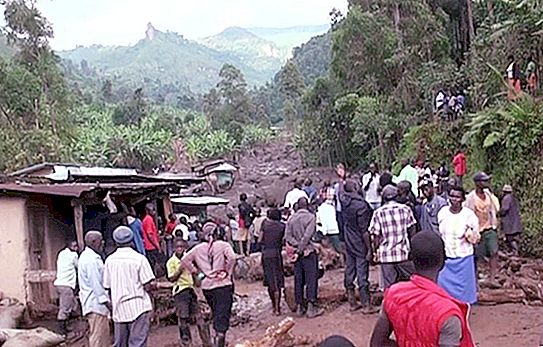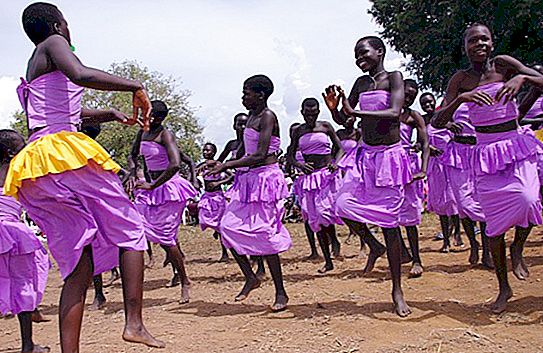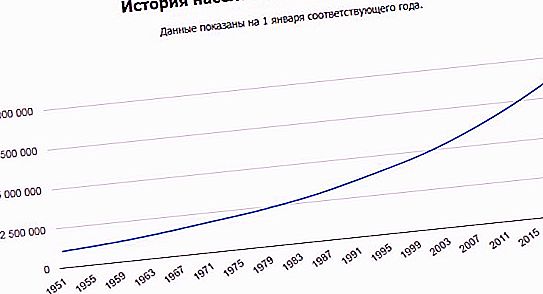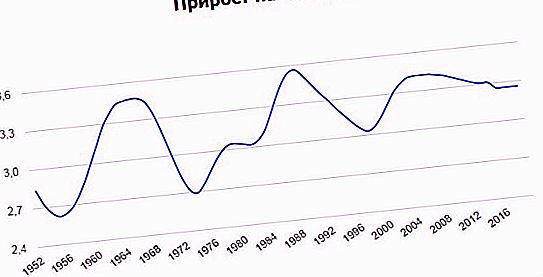Uganda is a small state in eastern Africa, within the African continent. It borders Lake Victoria in the southeast, borders with South Sudan, Tanzania, Rwanda, the Democratic Republic of the Congo, and Kenya in the east. Geographically, Uganda is located near the equator.
The official language is English. Among the local languages, the most commonly used is Luganda. In domestic trade, the Swahili language is used.
The population of Uganda is growing rapidly.

Natural conditions
The territory of the state is a vast plateau with heights from 1000 to 1500 meters. The climate is subequatorial, humid in summer. The annual precipitation is about 1000 mm, and in some places in the south and west - more than 1500 mm. Wet and dry seasons are well defined. Temperatures are quite low for these latitudes: +25 ° C in the warmest month and +20 ° C in the coldest. Good climatic conditions allow in many areas to harvest two crops a year.
Tall grasslands prevail; plots of rainforest are found. Forest cover is higher in the south than in the north.
Uganda Economy
The basis of the country's economy is the cultivation of coffee. In agriculture 82% of the total number of employees are employed. Locals are engaged in fishing, gold mining. GDP per capita is one of the lowest in the world. Literacy is also very low. For example, only 76% of men and 57% of women can read and write.
Uganda population
Uganda is one of the countries with very fast population growth. In 2014, 34.8 million people lived here, and at the end of 2018 - already 43.7 million people. The average annual increase in the number of people is 3.6%. This puts the country in second place in the world in terms of population growth rate. By 2100, it can reach 192.5 million people, if, of course, a small territory can feed such a number of people, given the extensive agriculture typical of Africa and the underdeveloped industry.
The population density in Uganda is 181.2 people / km 2. The vast majority of residents are representatives of the rural population.

On average, there are 6.73 births per woman; infant mortality is 64 people per 1000 inhabitants.
The total life expectancy is 52 years for men and 54 years for women, which is a very small indicator. The average age of residents is also extremely low - 15 years. This is the highest record in the world.
The country is also highly infected with AIDS - 6.4% (according to 2010 data).
Population dynamics
The population of the country is growing exponentially. Relative growth rates are also increasing, although this growth is wave-like. In 2018, the population increased by 1, 379, 043 people, which is 3.26% per year. The number of births was 1, 847, 182 people, and the number of deaths was 433, 039 people.

The natural increase was equal to 1, 414, 143 people, and the migration flow was negative (it left more than it entered) and amounted to -35, 100 people. Obviously, as population density increases, the number of people leaving the country will increase rapidly. As you know, from a crowded bowl, water spills out more easily.

Demographic load
A high population density creates a burden on natural ecosystems, resources, agriculture, and medicine. The country has a rather high level of demographic burden on the economy. It is believed that a population under the age of 15 and over 64 is not active in labor terms. Due to the large proportion of younger ages, the load coefficient is high and equal to 108%. This means that workers must feed as many unemployed.
The racial makeup of Uganda
The basis of the population of this country is Bantu peoples, which account for about 70% of the population. Of these, the largest share belongs to the Gandha people (16.9%). In second place are the Nilotian peoples - about 30% of the total number of inhabitants.
Age structure
Among the population in Uganda, the percentage of residents under the age of 15 is very high - 49.9%. Locals aged 15 to 65 years - 48.1%. A very small proportion of representatives of older age groups (over 64 years) is only 2.1%. Such indicators are associated with high fertility and low life expectancy. This is the age structure of the population of Uganda.
According to the UN, such unfavorable indicators are the result of a low level of education and healthcare, peculiarities of life style, traditions and customs.
Life expectancy
According to UN estimates, if the demographic characteristics in the country do not change, then the average life expectancy for men will be 52.2 years, and for women - 54.3 years. On average, it will be equal to 53.2 years. These numbers are much lower than the average life expectancy in the world, which is about 71 years.





